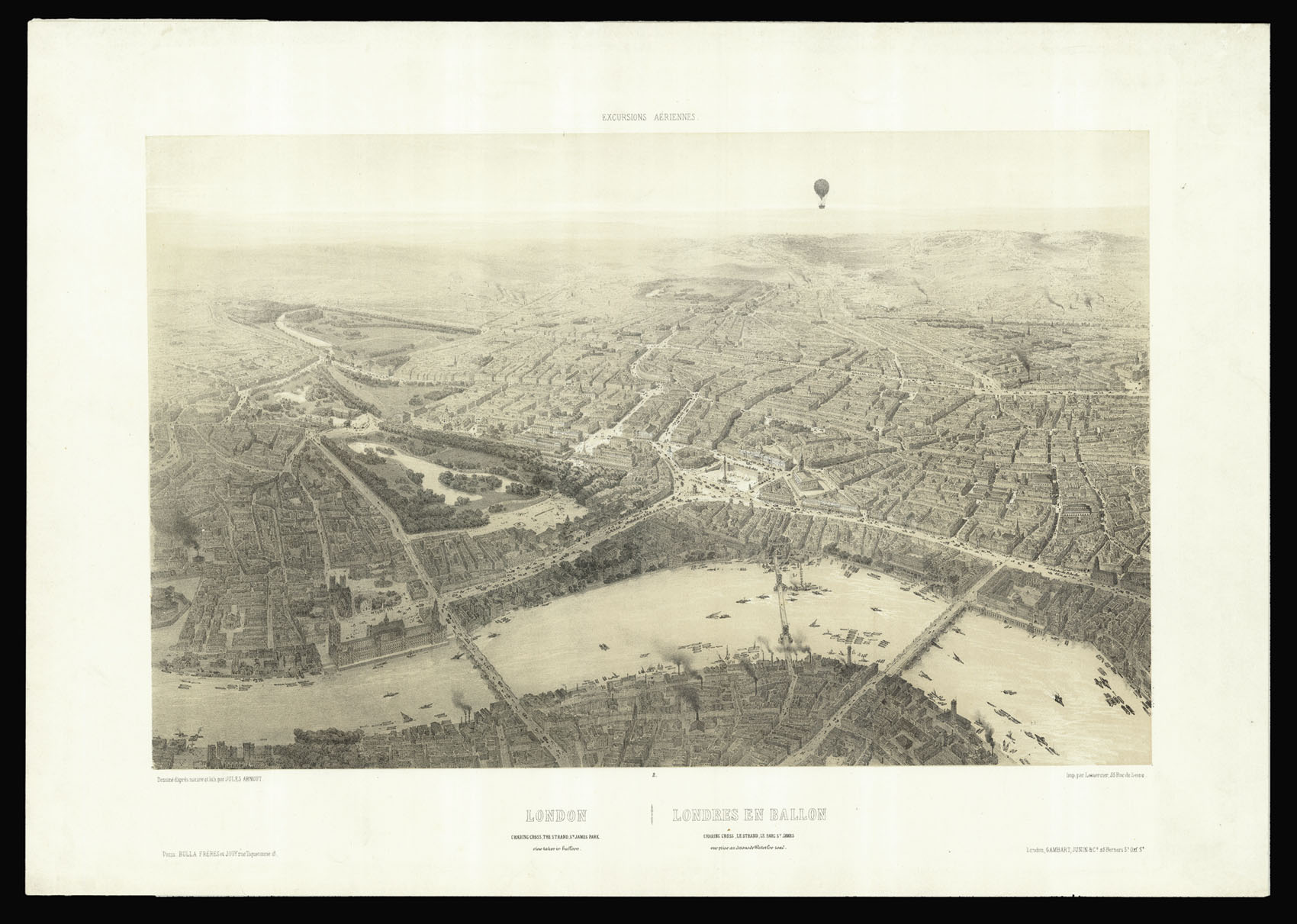

London, view taken in balloon; The City London view taken in balloon. Londres en ballon, vue prise au dessus de Waterloo Road : Londres en ballon, vue prise au dessus de Blackfriars Bridge [together with:] London Charing Cross The Strand, St James Park view taken in balloon ; Londres en ballon Charing Cross, Le Strand, Le Parc St James vue prise au dessus de Waterloo Road.
- Author: ARNOUT, Jules, [drawn and lithographed]; [printed by] LEMERCIER & Cie.
- Publication place: London and Paris
- Publisher: London, Gambart, Junin & Co. at 25 Berners St. Oxf. St.; Paris, Bulla Frères et Jouy rue Tiquetonne 18
- Publication date: 1846-1848
- Physical description: Two lithographs.
- Dimensions: Image: each 290 by 445mm (11.5 by 17.5 inches). Sheet: 390 by 555mm (15.25 by 21.75 inches).
- Inventory reference: 12334
Notes
The invention of the hot air balloon sparked an interest in aerial views, and a small balloon features on the horizon of both images: artists had imagined what landscapes might look like from the air for centuries, and now there was ample opportunity to find out what the reality might be. The French artist and printmaker Jules Arnout (1814-68) was a pioneer of the format, and travelled across Europe making bird’s eye views of major cities and important civic events. He used a hot-air balloon to sketch during each flight and then, drew his balloon into the final scene. That a Frenchman would lead the way in this area was unsurprising: the use of manned hot air balloons developed in France in the late eighteenth century. The first balloon flights with passengers were made there in 1783, and in 1794 the French were the first to use a balloon in war during the Battle of Pleurus.
Arnout was most famous for a series of prints called the ‘Excursions aèriennes’, including the present examples. The series comprised 21 lithographs of bird’s eye views of French and English towns.
Arnout’s primary printer and publisher was Joseph Rose Lemercier (1803-1887), whose Paris firm specialized in lithographic printing. Together, they collaborated with publishers throughout Europe to distribute Arnout’s scenes.
The second view looks north across the Thames towards Whitehall and the Strand with Hyde Park and Regent’s Park (with the Colosseum) in the distance. Hungerford Suspension Bridge (opened 1845) is shown. The Houses of Parliament are represented as if complete but with no ventilator tower and a clock tower more slender than that eventually built.
Ralph Hyde distinguishes two states of the second ‘City London’ print, the first without the Gambart imprint.
Bibliography
- BM 1880,1113.5506
- Met 62.696.2. Ralph Hyde, private notes.
 Rare Maps
Rare Maps  Rare Atlases
Rare Atlases  Rare Books
Rare Books  Rare Prints
Rare Prints  Globes and Planetaria
Globes and Planetaria 










